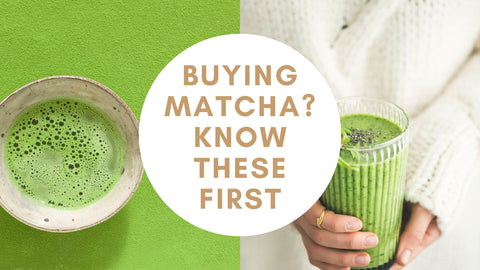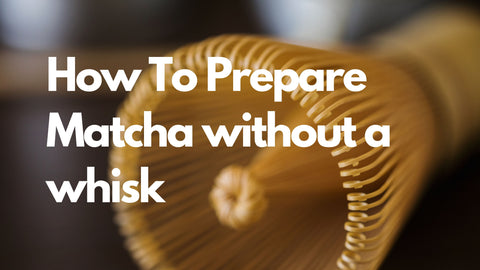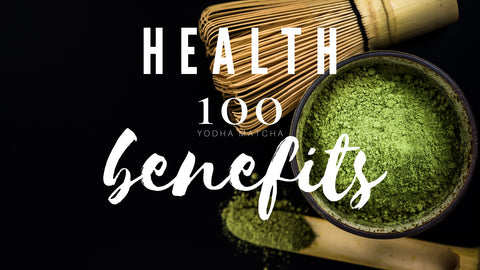The Art of Matcha and Meditations
What is Green Tea Ceremony? How Can I Use Matcha in Meditation?
Referred to as Sado in Japanese, Green Tea Ceremony is a mindful way of preparing matcha. Literally meaning Way of Tea, it is a communal ritual of grace, presence and respect. Essentially, it’s a moving meditation. There are two underlying principles: Wabi, the inner life, and Sabi, the outer life.
History of Green Tea Ceremony
Green Tea Ceremony has its roots in Chinese Buddhism, where monks started to use tea as an aid for meditation. In fact, it was Chinese monks who first domesticated wild tea, turning a six-meter high tree into a more manageable one-meter bush. By A.D. 720, green tea drinking had become ritualized and tea expert Lu Yu wrote the Cha Ching (Classic of Tea), explaining not only cultivation but precise preparation. He advised on things like the exact height to hold the pot when pouring the water.
It was in Japan, however, that matcha and Green Tea Ceremonies really took hold, developing in harmony with Zen. Monks including the influential Eisai found the invigorating and calming properties of ceremonial grade matcha aided Zen meditation. Zen Master Sen no Rikyu had the greatest influence, creating the four pillars of Sado: Wa (harmony), Kei (respect), Sei (purity) and Jaku (tranquility). Have a look at our Brief History of Matcha post for more details.
The Ceremony Itself
The performance ritual in Sado is called Otemae, and is a series of very precise movements. Placement of the hands is paramount and when perfected it is almost a silent dance. In Japan, local groups meet in a special room called a chashitsu, with tatami matting, a hearth for heating water, and hanging scrolls with proverbs and wisdom. Many people also practice at home in a quiet, minimally decorated area, so feel free to improvise with your Yodha Matcha in a corner of your kitchen!
There are two kinds of ritual: the very formal Chaji, which involves a meal and can last over four hours, and the simpler Chakai, which fits easily into the working week.
Whichever one it is, guests always perform a purification ritual upon meeting, washing their hands at a stone basin. The host – an expert in Sado – greets them with a traditional bow and the ceremony begins. The host ritually cleanses the chawan (ceremonial bowls) and chasen (bamboo whisk). You’ll find some of these essential in our Yodha Matcha Starter Kit.
Once the utensils are physically and spiritually spotless, the host froths ceremonial grade matcha – silky powder with an iridescent green color – with hot water using the chasen until a layer of fine foam forms on the top. Everyone contemplates the beauty of the matcha before sipping it in a mindful manner, deeply appreciating the equilibrium of sweet and umami flavors. Little sweets are often served alongside.
Your Yodha Matcha Mindful Meditation
Green Tea Ceremony is increasingly popular in the west, with clubs popping up in many cities. You don’t have to do the full ritual, though. At home, you can use your Yodha Matcha Starter Kit to bring a little Zen into your life. It includes a choice of traditional bamboo whisk or electric whisk. Whichever you prefer, it’s the mindful approach and ceremonial grade matcha that’s key. Early morning, before your mind is fully awake, is a great time to practice our simple matcha meditation.
First of all, spend a few minutes breathing deeply, allowing any tense areas of your body to relax. If any thoughts pop into your head, allow them to be there, coming back to focusing on your breath.
Then, take a scoop of matcha and place it carefully in your bowl or cup. Admire its vivid beauty.
Add just a little water. As you whisk it into a paste, try to stay present, focusing on each beat of the whisk. Don’t worry if your mind starts thinking about other things – just gently come back to your breath.
Then, add more water, whisking until it froths. Again, take time to appreciate how it looks.
Take your first sip, really feeling how different parts of your tongue light up at its taste. Drink it little by little, continuing to contemplate the multifaceted flavor.
After you’ve finished, consider all the people who contributed to bringing you your tea – the growers, the pickers, the people who packaged and transported it. You may want to think of all the monks who passed on the tradition of matcha over the centuries, including the ones who tamed wild tea.
Really feel your gratitude and connection to them.
Afterwards, do your best to remain calm throughout the day. Of course, this takes practice so be gentle with yourself.




